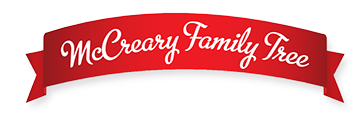![INTRODUCTION In the late 1970s I watched my father, Edwin Brune and mother Ruth (Hecht) Brune work on genealogy. My dad had recently retired and took up genealogy as a hobby. My mom had notes from her mother and she began adding the data to charts that looked like family trees. A few years later, I married and became interested in gathering information on my new married name. Thus began the collection of data that led to this book. When I started genealogy, the technique for finding information was so different than today. Most of the data that I’ve gathered on the Hecht family I’ve acquired in the past five years. Using a computer, the internet, and email has enabled me to find many relatives that my mother didn’t know existed. I’ve used much of my vacation time from work to research records at the Franklin County, Missouri Courthouse, Madison County, Illinois Courthouse, Recorder of Deeds offices, Probate Court, the Scenic Regional Library in Union, Missouri, cemeteries, State Historical Society of Missouri in Columbia, MO, Missouri Archives in Jefferson City, St. Louis County Library, St. Louis Genealogical Society, St. Louis Public Library, Zion United Church of Christ, and of course any database I could find on the internet. I’ve written hundreds of letters and emails to relatives and organizations to gather information.
I’ve been blessed that my late grandmother, Alvina (Brueseke) Hecht and my mother Ruth (Hecht) Brune were organized people. They each had extensive photo albums with nearly every picture labeled with names and dates. Some of these photos went back to 1895. Without those photos this book would merely be a bunch of words. I’ve pestered relatives to write stories about their families, parents, and grandparents so I could add them to this book. I thank many of them for doing this and sharing copies of photos and other documents. It’s these stories that make the people interesting and more than just “born, married and died” statistics. Several Hecht “cousins” said their Hecht relative wasn’t very exciting and they didn’t have anything interesting to share with me. However I want to preserve this history for the very reason that most of the Hechts were ordinary people. If I can generalize and characterize them I would say they came from strong German stock, had a good work ethic, worked hard and most achieved a lot in spite of humble beginnings. Many of the Hechts were poor and struggled through the depression years of the 1930s. Through lots of marriages and ten generations, Henry Hecht, the immigrant, is responsible for nearly 700 descendants that I’ve included in this book. Unfortunately, my daughter Megan does not share my interest in genealogy. I began thinking about what would happen to all the data I’ve accumulated. I think that interest in family history doesn’t develop until mid or late life and Megan as a college student was too young to appreciate the family history. In 2004 I took a class on How to Write Your Family History and that led me to start this book. I needed technological help to type it in the proper genealogical format, add footnotes, and to add the scanned documents and photos. I thank Ann Fleming, CG, CGL for her able assistance in taking my “parts” and being the “assembly plant”. Throughout the book I have retained the original spelling I found in historical documents even if it was incorrect. I have tried to list “(sic)” to designate the spelling is incorrect but as I found it.
My approach has been to concentrate on the Hecht relatives. Of course there are allied lines but most of the data is about the Hechts. I included nearly everything I learned on the deceased family members. In order to protect the privacy of the living I have only used names and years of birth and marriage, not complete dates, etc. unless the family member gave permission to include more. Years of birth were necessary to distinguish between people with the same name. I hope I have not offended anyone with what I have included. If I have, I apologize. If there are corrections or additions, I welcome knowing about them. Throughout the book, I have retained the original spelling I found in historical documents, even if it was incorrect. I have tried to list [sic] to designate the spelling is incorrect; however, the text contains the original spelling. Thus you will see a name spelled many ways. + A plus sign to the left of a name indicates this person is listed in detail later. ca Circa, this indicator means about, and is used when an exact date is unknown. [sic] This symbol is used when a document contains a misspelled word or another error. When citing original records, the information is transcribed as it appears in the document even though it is incorrect. A small italic number after a given name, Thomas2, is a generation number showing the number of generations from the first family member. The superscript numbers within or at the end of a sentence are the citation numbers. The endnotes provide the documentation where this information was located. Information written in italics indicates I did not write this material and it is from another source. Marian (Brune) McCreary](images/u6648-57.png)
Charles Schmidt Civil War reunion, 1895
Charles, front row, seccond from left
Leo Hecht in a cowboy suit, 1918


© Marian McCreary 2015
![INTRODUCTION In the late 1970s I watched my father, Edwin Brune and mother Ruth (Hecht) Brune work on genealogy. My dad had recently retired and took up genealogy as a hobby. My mom had notes from her mother and she began adding the data to charts that looked like family trees. A few years later, I married and became interested in gathering information on my new married name. Thus began the collection of data that led to this book. When I started genealogy, the technique for finding information was so different than today. Most of the data that I’ve gathered on the Hecht family I’ve acquired in the past five years. Using a computer, the internet, and email has enabled me to find many relatives that my mother didn’t know existed. I’ve used much of my vacation time from work to research records at the Franklin County, Missouri Courthouse, Madison County, Illinois Courthouse, Recorder of Deeds offices, Probate Court, the Scenic Regional Library in Union, Missouri, cemeteries, State Historical Society of Missouri in Columbia, MO, Missouri Archives in Jefferson City, St. Louis County Library, St. Louis Genealogical Society, St. Louis Public Library, Zion United Church of Christ, and of course any database I could find on the internet. I’ve written hundreds of letters and emails to relatives and organizations to gather information.
I’ve been blessed that my late grandmother, Alvina (Brueseke) Hecht and my mother Ruth (Hecht) Brune were organized people. They each had extensive photo albums with nearly every picture labeled with names and dates. Some of these photos went back to 1895. Without those photos this book would merely be a bunch of words. I’ve pestered relatives to write stories about their families, parents, and grandparents so I could add them to this book. I thank many of them for doing this and sharing copies of photos and other documents. It’s these stories that make the people interesting and more than just “born, married and died” statistics. Several Hecht “cousins” said their Hecht relative wasn’t very exciting and they didn’t have anything interesting to share with me. However I want to preserve this history for the very reason that most of the Hechts were ordinary people. If I can generalize and characterize them I would say they came from strong German stock, had a good work ethic, worked hard and most achieved a lot in spite of humble beginnings. Many of the Hechts were poor and struggled through the depression years of the 1930s. Through lots of marriages and ten generations, Henry Hecht, the immigrant, is responsible for nearly 700 descendants that I’ve included in this book. Unfortunately, my daughter Megan does not share my interest in genealogy. I began thinking about what would happen to all the data I’ve accumulated. I think that interest in family history doesn’t develop until mid or late life and Megan as a college student was too young to appreciate the family history. In 2004 I took a class on How to Write Your Family History and that led me to start this book. I needed technological help to type it in the proper genealogical format, add footnotes, and to add the scanned documents and photos. I thank Ann Fleming, CG, CGL for her able assistance in taking my “parts” and being the “assembly plant”. Throughout the book I have retained the original spelling I found in historical documents even if it was incorrect. I have tried to list “(sic)” to designate the spelling is incorrect but as I found it.
My approach has been to concentrate on the Hecht relatives. Of course there are allied lines but most of the data is about the Hechts. I included nearly everything I learned on the deceased family members. In order to protect the privacy of the living I have only used names and years of birth and marriage, not complete dates, etc. unless the family member gave permission to include more. Years of birth were necessary to distinguish between people with the same name. I hope I have not offended anyone with what I have included. If I have, I apologize. If there are corrections or additions, I welcome knowing about them. Throughout the book, I have retained the original spelling I found in historical documents, even if it was incorrect. I have tried to list [sic] to designate the spelling is incorrect; however, the text contains the original spelling. Thus you will see a name spelled many ways. + A plus sign to the left of a name indicates this person is listed in detail later. ca Circa, this indicator means about, and is used when an exact date is unknown. [sic] This symbol is used when a document contains a misspelled word or another error. When citing original records, the information is transcribed as it appears in the document even though it is incorrect. A small italic number after a given name, Thomas2, is a generation number showing the number of generations from the first family member. The superscript numbers within or at the end of a sentence are the citation numbers. The endnotes provide the documentation where this information was located. Information written in italics indicates I did not write this material and it is from another source. Marian (Brune) McCreary](images/u6648-57.png)
Charles Schmidt Civil War reunion, 1895
Charles, front row, seccond from left
Leo Hecht in a cowboy suit, 1918


© Marian McCreary 2015